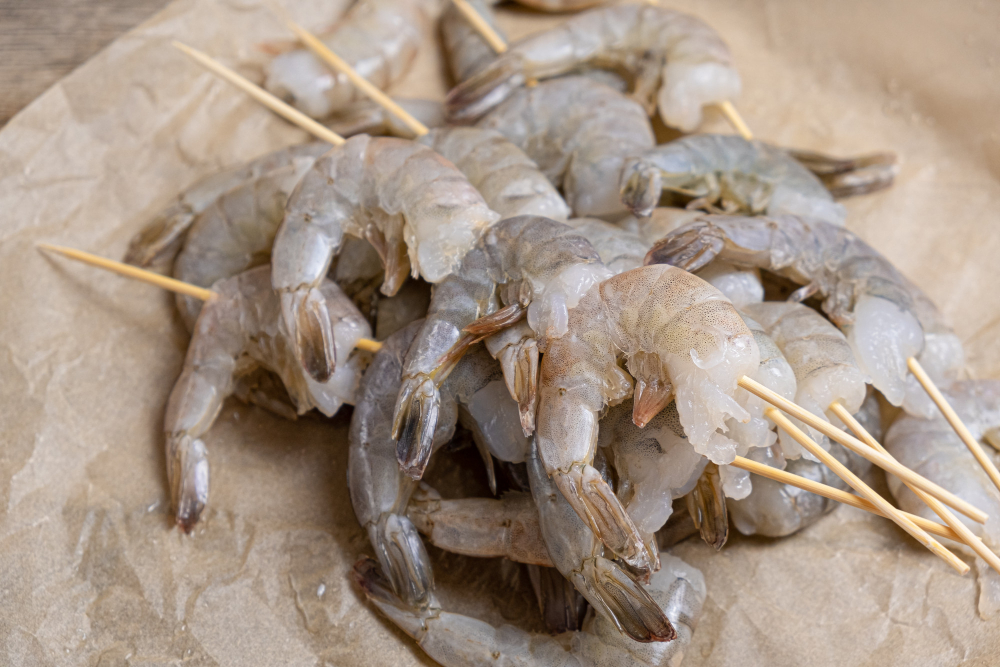Morgan City is a Louisiana town rooted in tradition. Our biggest event of the year kicks off Labor Day weekend, when this year will mark the Shrimp and Petroleum Festival’s 85th Anniversary. It is the oldest harvest festival in Louisiana and a point of pride that has weathered storm after storm.
The Early Years (1920s-1960s)
Morgan City was put on the map with the lumber business in the 1800s. The cypress swamps provided tremendous opportunity and financial gain– until the supply became depleted. Fortuitously, just as the lumber trade was declining and the population waning from the Great Depression, the first heaping boatload of jumbo shrimp sailed down the Atchafalaya River and arrived in the Morgan City port from the Gulf of Mexico’s deep waters.
“Why then this old boy from Florida sent one of his 24 shrimp boats down here to fish out of Morgan City– and, shrimping, he made a one-day trip and was about to sink his boat with the shrimp,” recalled TR Naquin, an early shrimper-turned-oil entrepreneur.
The tremendous haul of shrimp breathed new life into the area. Local members of the Gulf Coast Seafood Producers and Trappers Association joined crab fishermen, dock workers, oystermen, frog and alligator hunters who celebrated with a street parade– the beginnings of the modern-day shrimp festival. Overnight, 10 or 15 boats came up from Florida, kicking off the local shrimping industry.
Suddenly, there were jobs and people moving from other parts of Louisiana, as well as states like Florida, Texas, and Oklahoma. Freezing houses sprung up to meet the demand of the expanding sector, new shipyards sprouted, schools were built, and infrastructure improvements were made.
Prior to the shrimping years, people had been working for 10 or 15 cents an hour. Now their wages were effectively doubled. First Street bars became popular hangouts to drink these wages, gamble, and fight. Rum boats and Chicago gangsters passed through the area during the “Roaring Twenties.”
Shrimping was a dangerous job in those early years when boats were small, engines were weak, and weather forecasts were a guess at best. Drowning, fires, explosions, and disabling injuries from shrimping equipment were commonplace. In 1937, festival chairman Paul Acklen LeBlanc pronounced the first “Blessing of the Fleet” to call upon God’s help in bringing the small wooden boats safely back to port.
Soon, technological innovations caught up, making it possible for shrimpers to take longer, safer trips; catch more, and preserve their catches for transport to major cities throughout the U.S. And so, Morgan City became known as “the shrimping capital of the world,” responsible for 25 percent of the nation’s annual shrimp harvest.
The Middle Years (1950s-2000s)
Oil became the next boon to Morgan City during the 1950s and linked up with the local shrimp festival in 1967. Times were tough for shrimpers. Regulations tightened, fuel costs increased, and workers were in short supply. Environmental changes like erosion and the shrinking Louisiana wetlands led to diminishing shrimp populations. Hurricane Katrina, Rita, Ike, and Isaac rocked an already-struggling ecosystem. The BP Deepwater Horizon oil spill only deepened the crisis.
Local fishermen will tell you the worst of it came from overseas competition. During the 1990s, Gulf shrimpers could fetch up to $4.50 a pound. Now, 90 percent of the shrimp consumed in America derives from farms in Southeast Asia and Latin America, where sellers offer high volumes for 75 cents to $1.50 a pound.
Modern Day (2000s-2020s)
Despite the hardships, Louisiana remains America’s top shrimp producer, with more than 100 million pounds exported annually. We continue to preserve the culture and traditions that made Morgan City great, while waiting for “the next boom.”
Since the Shrimp and Oil Festival’s inception, it has earned nationwide accolades as “Festival of the Year” in 2006, 2007, 2014, and 2015. Time Magazine described the crustacean celebration as “the best, most unusual, the most down-home, the most moving, and the most fun that the country has to offer.”
More than 145,000 people flood the area to partake in a celebration of the unique way that two different industries have come together to support a community. There is something for everyone with live music, arts and crafts vendors, a children’s village, car shows, baseball and softball tournaments, cooking contests, historic tours, and fireworks.
Additionally, the Wedell-Williams Aviation and Cypress Sawmill Museum in Patterson has opened a display titled, “From Berwick Bay to Étouffée: Shrimping in Louisiana” through September 2020. The museum itself is an old replica of a lighthouse built on the property of historic shrimper “Butch” Felterman Jr. His personal tribute to the industry features shrimp boat models, photographs, maritime equipment, and other artifacts spanning 1937 to 1988.
Unique Festival Name, Unique People
Parker Conrad came to Morgan City from a wealthy family in Jefferson Island, striking out on his own during the Great Depression to build shrimp boats. He explained: “These people who go after fishing and shrimping are the kind of people who work for themselves. They’re ambitious. They work hard. Time doesn’t mean anything to them. If they have to work around the clock, they do. So, the background of most of the people here has been very good, because they’ve made a living trapping, fishing, or whatever, worked for themselves.”
It’s this hardworking spirit, which provided the economic lifeblood to the area, through rain and shine, for more than half-a-century, that we recognize with this historic look back into the history of Morgan City shrimping.
Injured in a maritime accident?
Contact us at Bart Bernard Injury Lawyers for a free legal consultation and legal representation at no upfront cost. Providing compassionate service along with the necessary resources to pursue maximum compensation.




